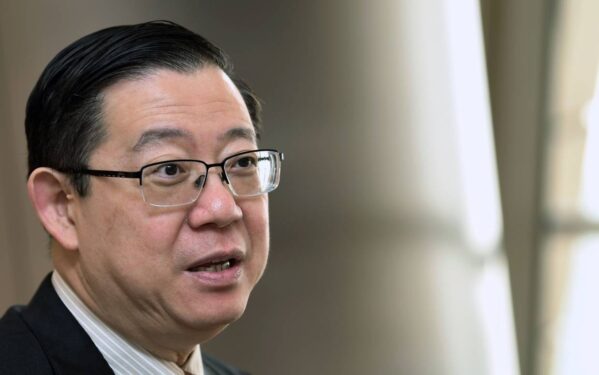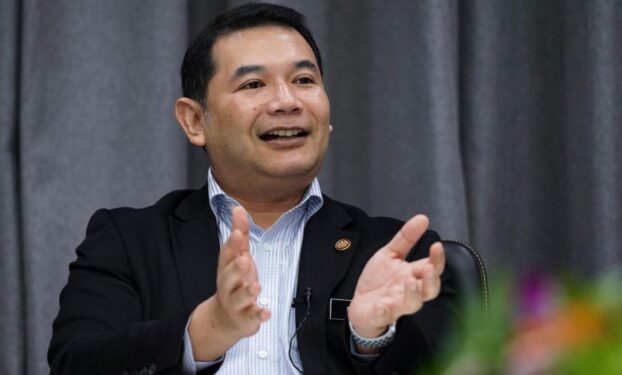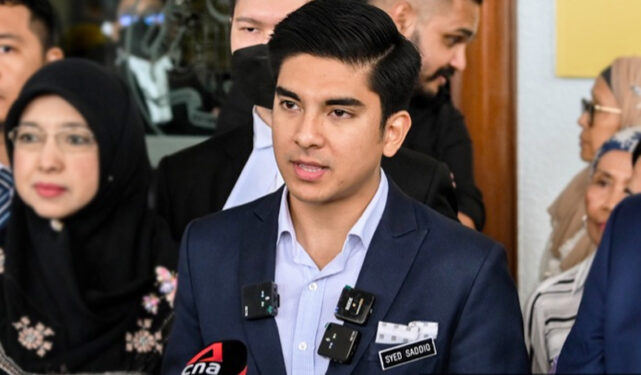By Xavier Kong
BROADBAND speed is a topic that has become near and dear to the hearts of most Malaysians, be it in terms of streaming high quality videos, staying connected during game sessions, making video calls, and basically just staying in the loop.
However, this brings its own set of grievances against the powers that be, those who provide us our daily bandwidth, and they who have made themselves integral to the smooth passing of a usual day: the telcos.
While the past few years have seen news that Malaysia is advancing in leaps and bounds with regards to connectivity, especially in the urban areas, Malaysia has been slipping in the global arena.
Most notably and relevantly, according to the Speedtest Global Index, Malaysia holds the rank of 37th out of 176 nations in terms of fixed broadband speed as of November 2019, marking a speed of 78.13 megabits per second (Mbps). This is a drop of 10 places from 27th in January 2019, when our fair nation recorded a speed of 70.18 Mbps.
In comparison, Singapore, who holds first place, sees a speed of 193.21 Mbps, while South Korea comes in second with 164.12 Mbps. Third place goes to Hong Kong with 157.64 Mbps.
Among the Southeast Asian nations, Malaysia ranks third in terms of fixed broadband speeds, preceded by Singapore and Thailand in second place with a recorded speed of 111.49 Mbps.
In the mobile internet speed rankings, on the other hand, Malaysia’s mobility is a different thing altogether. Between October and November 2019, Malaysia rose five places to sit at 79th with a recorded speed of 23.3 Mbps, making it a net drop of two places from 77th in January 2019, when it recorded 20.58 Mbps.
Within the region, Malaysia sits at fifth, coming after, again, Singapore with 53.64 Mbps in 12th place in the overall rankings, Vietnam with 29.08 Mbps in 62nd, Laos with 25.09 Mbps in 71st, and Thailand with 23.72 Mbps in 77th.
In comparison, first-placed South Korea scored 117.79 Mbps, with second-placed Qatar recording 77.07 Mbps and third place Norway clocking 77.07 Mbps.
South Korea and Switzerland are two nations that stand among the top 10 in both sets of rankings, with the former coming in second in fixed broadband speeds and first in mobile internet, and the latter coming in sixth in fixed at 144.34 Mbps and 10th in mobile at 57.09 Mbps.
Citizen connectivity
According to the Department of Statistics, Malaysia’s individual internet usage stands at 81.2% of the population as of 2018, which is a steady increase over the years since 2000, when individual internet usage stood at 21.38%. The figure is expected to hit 86% by 2023.
This stands in line with the words of Communications and Multimedia Minister Gobind Singh Deo, who had stated in January 2019 that he wants to ensure that all Malaysians can enjoy an internet service of international standard.
During an interview with SARAWAKfm, the minister stated that “the ministry wants to place emphasis on an internet service of world-class quality that comes with minimum speeds of 10 Mbps and 40 Mbps in a good environment.”
However, according to a recent report by OpenSignal, which polled the connectivity of mobile users (citing that the preferred means of connecting to the internet nowadays is through a mobile device), there remains a disparity in connectivity between urban and rural users as of the end of 2019.
According to the report, as of October 2019, rural users polled were only able to find a 4G connection about half of the time when compared to the urban users polled.
“Opensignal found that while our users in the most densely populated districts could connect to 4G networks 83.7% of the time, users in the most sparsely populated districts spent just 44% of their time on 4G networks – a difference of almost 40 percentage points.”
It was also reported that, upon examination of the time the users spent connected to all mobile data networks, this disparity diminished, but with availability still showing a disparity of almost 25 percentage points, from 97.6% in most densely populated areas to 72.9% in the most sparsely populated districts.
A follow-up report from OpenSignal, which broke down the connectivity enjoyed by the users polled according to the mobile service provider they used, found that Malaysian users in underpopulated areas continue to depend more on the older, slower 3G, despite operators having shown rapid improvements in 4G availability.
While it seems that connectivity is indeed improving for Malaysians across the board, the question remains about how the government intends to improve connectivity in rural or underpopulated areas.
In the case of Sabah and Sarawak, the minister himself had acknowledged that the landscape of the two states, which featured many mountains and remote areas, will likely be a challenge, but stated that “it had to be overcome”.
Connecting the nation
This leads pretty well into the next point, which is the implementation of the National Fiberisation and Connectivity Plan (NFCP), which aims to “provide an established, pervasive, high quality and affordable digital connectivity for the well-being of its citizens and the progress of the nation”.
According to the Malaysian Communications and Multimedia Commission (MCMC), the NFCP was developed in response to the need to improve broadband quality and coverage, reduce broadband prices, enable internet access for all, and to expand fibre networks to facilitate internet access for the people.
The communications infrastructure must be able to support the needs of the country in this digital era, and enable all Malaysians to harness the vast opportunities offered by new technologies and innovations, according to the proposal.
The plan, which was lauded by telco players across the country, carries a price tag of RM21.6 bil, of which 50% to 60% will come from the Universal Service Provision (USP) fund, between RM10 bil and RM11 bil, according to MCMC chairman Al-Ishsal Ishak. The remainder will come from the capital expenditure of the telco players themselves.
This was then approved by the Cabinet, along with the implementation and execution timeline of five years, beginning from 2019 to 2023.
In terms of network coverage and quality, the goal is to have the fibre network passed through 100% of premises in state capitals and selected high-impact areas up to 500 Mbps in speed, with 20% availability for premises in suburban and rural areas with speeds up to 500 Mbps, supplemented by mobile broadband connectivity with an average speed of 30 Mbps in 98% of Malaysia’s populated areas.
5G’s role in the NFCP
Mobile broadband connectivity brings with it the term of the month, 5G. Standing for fifth generation, 5G networks have actually been the talk of the town for a while now, especially following its key role in the NFCP.
The implementation of 5G has its own set of trials as well, with the need for infrastructure that is able to support a 5G network, as well as the allocation of spectrum bands to ensure the network and technology are put to best use.
Celcom Axiata Bhd’s chief executive officer Idham Nawawi shared that the group began its 5G journey in 2017, and have been working since then to enhance its core and radio access networks with the latest 4G technologies, effectively making its network “5G-ready”.
Last December, Celcom signed an agreement to join the Innovation Centre for 5G (IC5G) in partnership with Universiti Teknologi Malaysia (UTM) and Ericsson at UTM’s Kuala Lumpur campus, with the objective of providing a platform to facilitate research on 5G in a campus environment.
“We are also actively collaborating with multiple technology vendors to pave the way for the delivery of a world-class 5G network. We believe 5G will play a key role in transforming how people work, live and play. It will enable a more enhanced consumer experience as well as create new opportunities for consumers, governments and businesses alike,” Idham told FocusM.
As it stands, the MCMC has announced that it has come to a final decision on spectrum bands for 5G, with the allocation process to be concluded by the third quarter of this year, when a commercial rollout of 5G is expected to take place.
It was decided that the 700MHz, 3.5GHz, 26GHz and 28GHz bands will be allocated for the rollout of 5G, while the 2300MHz and 2600MHz bands will be maintained as per their existing allocation, pending their maturity for 5G until Dec 31, 2021, but with a review prior to expiry.
This includes allocating the 700MHz and 3.5GHz bands to a single entity comprising a consortium of multiple licensees instead of individual licensees, with the MCMC stating that the capital expenditure burden in rolling out the relevant infrastructure will be lower via the sharing of resources.
With regards to the planned rollout in the third quarter, the chairman of the MCMC, Al-Ishsal Ishak, believes that the rollout of 5G networks in Malaysia has to be done immediately for “national survival”.
“The 5G ecosystem readiness is way faster than what we had anticipated in June last year. We feel Malaysia should not wait or be left behind because we have been progressive in the process of the four generations of networks in the past,” said Al-Ishsal.
As it stands, Malaysia is currently in the testing and use case stage of the rollout, with several 5G labs and implementations currently in testing among the local telco players. Some test cases include the use of 5G in remote health monitoring, the improvement of port security, as well as virtual tourism.
Most of Southeast Asia is currently at the same stage as well, according to the Ookla 5G Map by Speedtest. However, the platform also shows that the Philippines already has commercial availability for its 5G network, powered by Globe Telecom, as of June 2019.
This leads back to Al-Ishsal sharing at a briefing in Cyberjaya that “all stakeholders, including the regulator, government, and industry players, recognise that Malaysia is behind in terms of broadband services”.
The MCMC chairman also cited the Malaysian Institute of Economic Research’s (MIER) report on the economic impact of 5G in Malaysia, which predicted that the implementation of 5G would contribute up to RM12.7 bil to Malaysia’s economy between 2021 and 2025, while creating more than 39,000 new jobs.
Celcom Axiata’s Idham also believes there are plenty of opportunities for businesses in 5G, especially with the Fourth Industrial Revolution around the corner.
“I believe that collaboration between businesses and telecom operators is a key success factor to bring 5G technology to bear to solve real business problems. This can take the shape of joint development of new applications and services,” he said.
Is Malaysia still in the 5G race?
With the admission that Malaysia is behind in terms of broadband services, and the rollout of the NFCP, will this serve as the carrot and the stick needed to push telco industry back to the forefront in the region?
Note that, besides increasing coverage for broadband and rolling out 5G, the NFCP also has the goal of phasing out the copper cable networks with the deployment of a more pervasive fibre network, while ensuring that broadband remains accessible to all, hence it being a national connectivity plan.
Being able to boost the ability of rural and suburban businesses through a more stable, higher speed, yet affordable internet connection should be a reward on its own, considering the boon it will mean for local economies, as well as the national economy in the long run. – Feb 7, 2020














